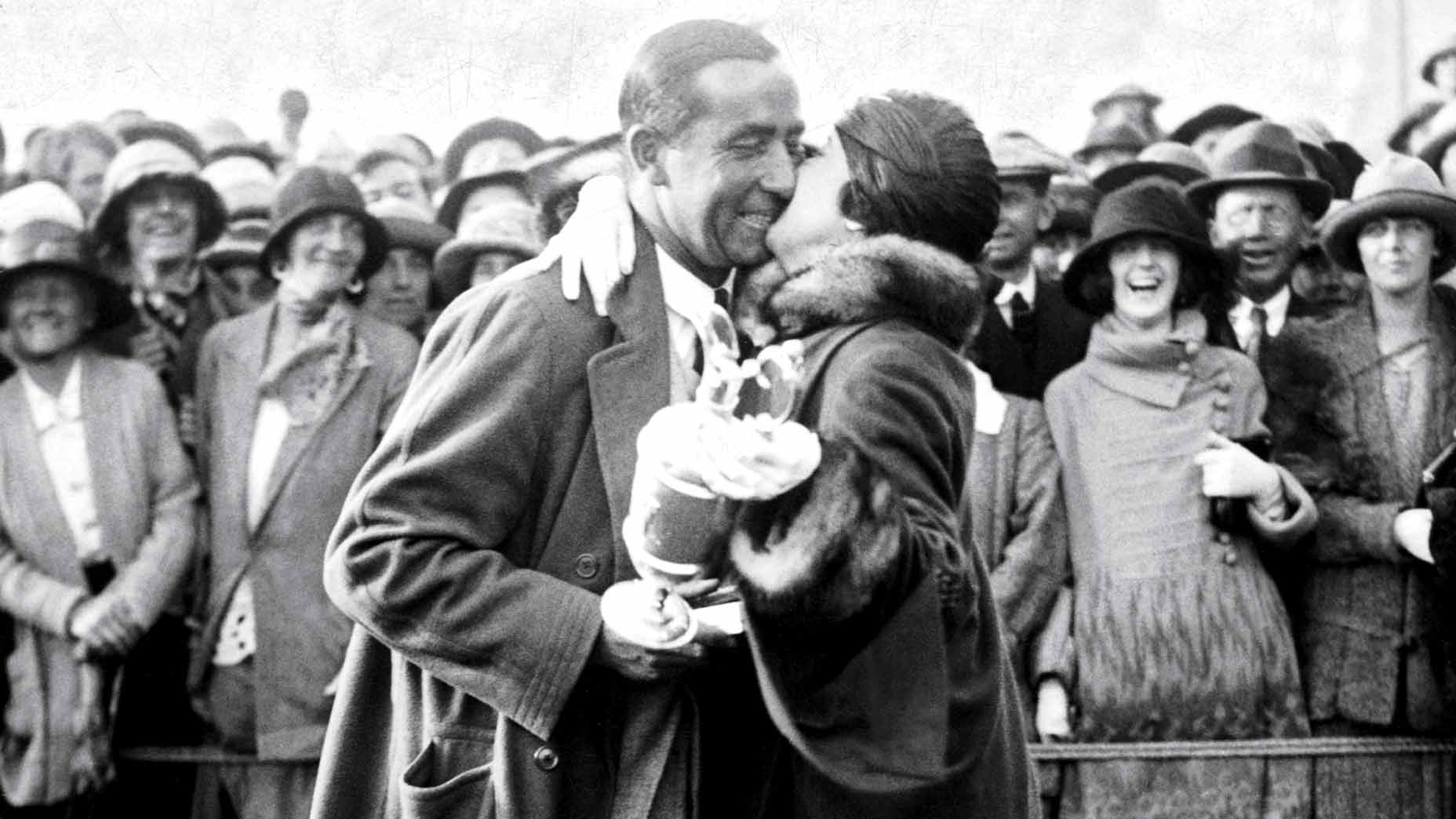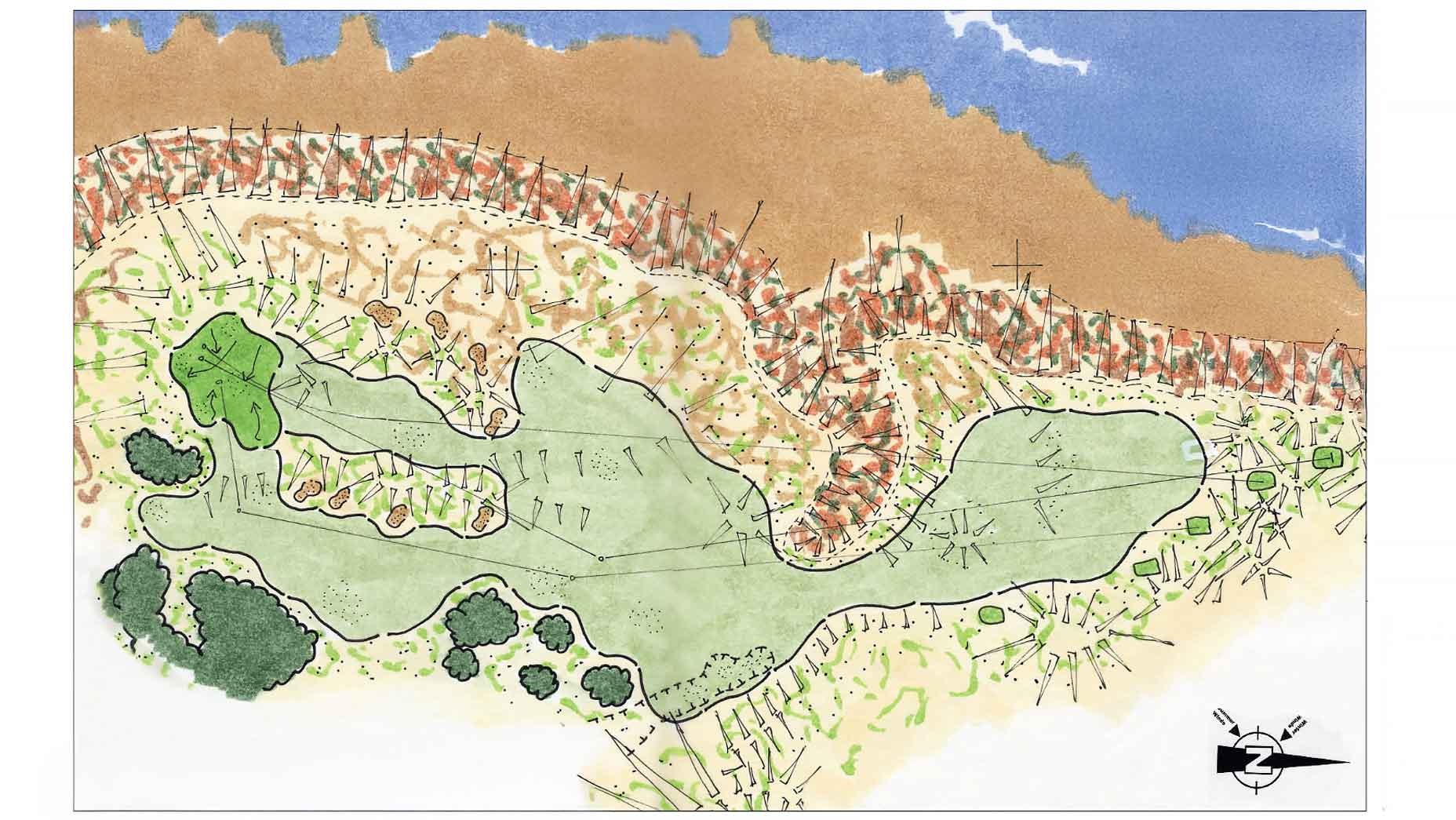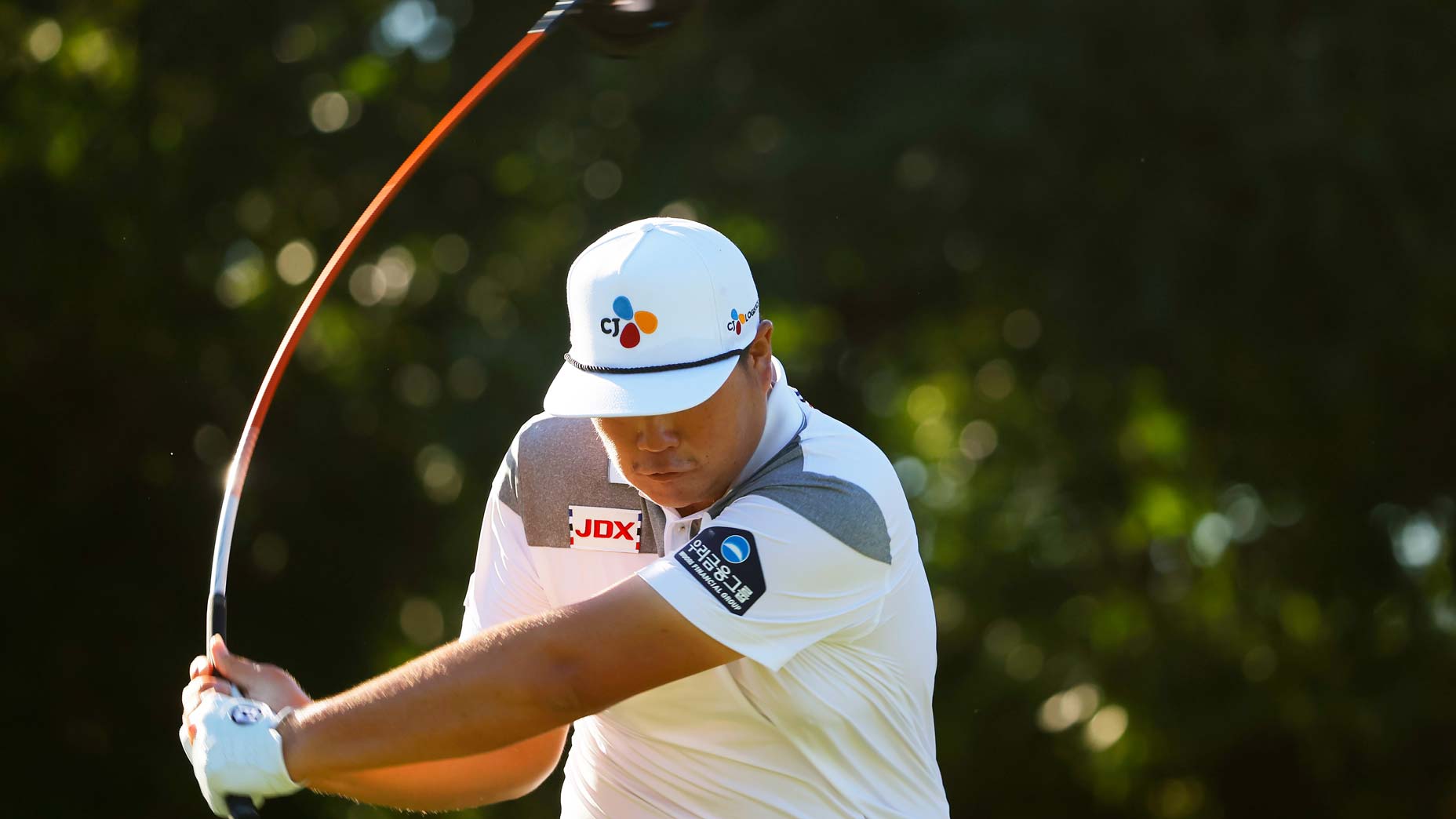When the winner of the Open Championship is presented the Claret Jug, he is anointed Champion Golfer of the Year, which sounds wildly vague and covers a lot of territory but is nevertheless entirely accurate. The Open is unquestionably the world championship of golf and has been since it was first played in 1860. It just took time for its world — and appeal — to expand.
Like the murky origins of baseball, which, in the U.S., gained grassroots followers at the local semi-pro level around the same time Willie Parks Senior and Junior and Tom Morrises Old and Young were banging around Prestwick and Mussleburgh, there’s no accurate moment of golf’s creation. As the late, great Dan Jenkins once wrote, “…you could say that the Chinese a thousand years ago probably played a form of golf by batting a few snow peas around with chopsticks.”
The point Jenkins was driving at, however, is that golf is unequivocally a Scottish game. “It was the Scots,” he wrote a few sentences later, “who took the game and did something with it when everybody else was busy making crossbows.”
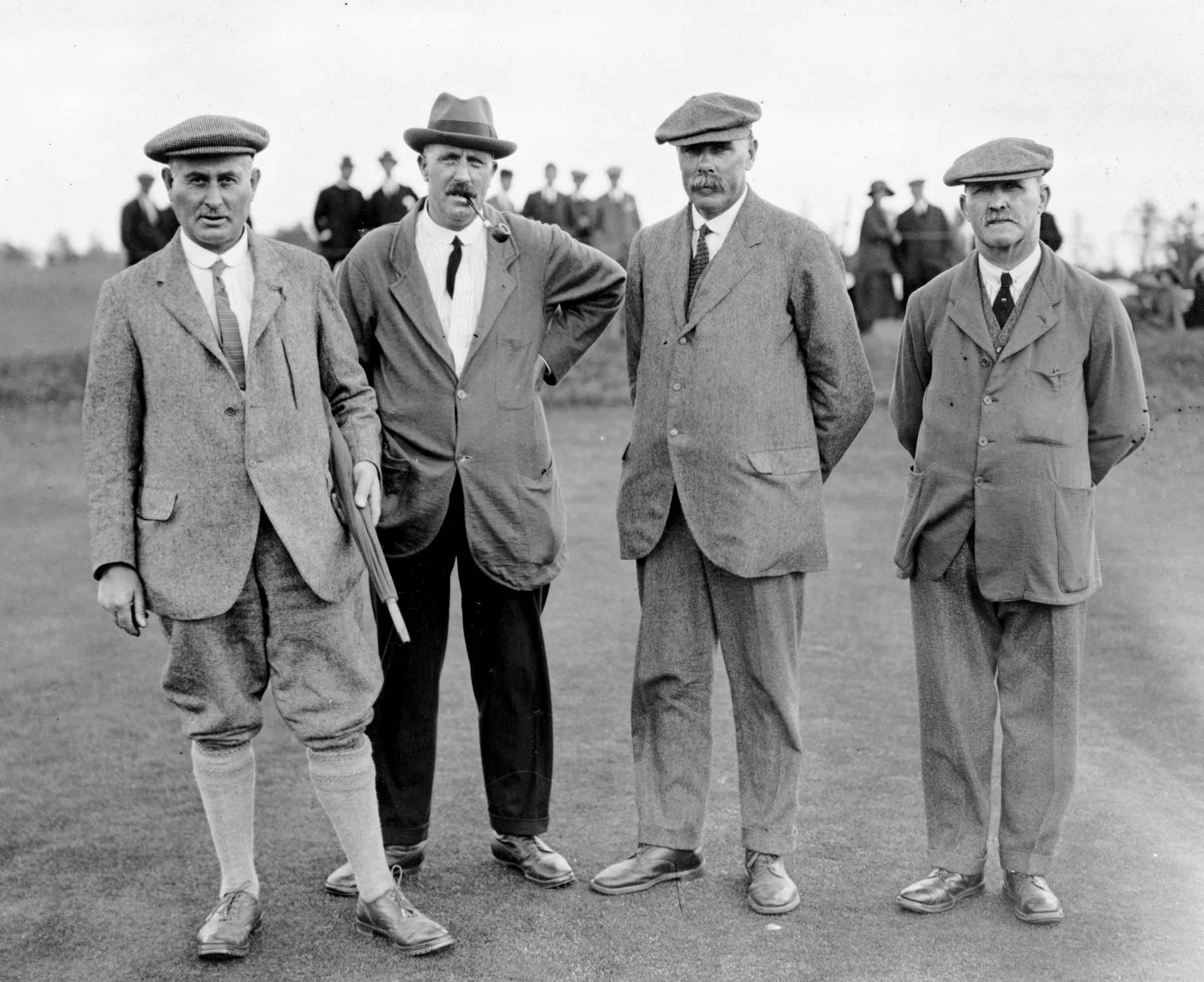
It’s true the first 29 Champion Golfers of the Year were Scotsmen, and that 54 of the first 55 Open winners were either Scottish or English (Arnaud Massy, a French fellow, won in 1907). That might not sound like a true world championship on the surface, but the island of Great Britain, indeed, was the championship golf world until 1914. Even though the U.S. Open was first played in 1895 (35 years after the first “Open”), its first 16 winners were from Britain. For context, consider that when Francis Ouimet won the 1913 U.S. Open, it wasn’t his winning that shocked the sporting world. It was who he beat: then five-time Open champ Harry Vardon — a Brit — and the defending champ, Englishman Ted Ray. (No one remembers John McDermott, the first American to win the U.S. Open — 1911 and ’12 — because he beat other Americans.)
The stateside players in the field when Ouimet won knew exactly what it would mean to beat English stars. Before the tournament started at The Country Club, the “veteran” McDermott (he was only 21, having won his first U.S. Open at 19 — still the youngest ever winner) was approached by a 20-year-old newcomer who introduced himself thusly: “I’m Walter Hagen, from Rochester, and I’ve come to help you boys take care of Vardon and Ray.”
Watch out for Walter; he is the best player by strokes in the States, and when he is once in the lead, the others have a job to get it away from him.
Harry Vardon won his sixth (still the record) and final Open Championship in 1914, at Prestwick. Nine days later, Austrian Archduke Franz Ferdinand was assassinated by Gavrilo Princip, leading to what was afterward called the Great War and eventually dubbed World War I. Vardon’s win capped a 20-year streak of dominance at the Open by the Great Triumvirate, which included himself, Englishman John Henry (J.H.) Taylor (five wins) and Scotsman James Braid (five wins). In all, the trio racked up 16 of 20 Opens beginning in 1894. Once the war began, however, the Open closed between 1915 and 1920.
The U.S. didn’t enter the hostilities until April 1917. The gap between the start of war in Europe and the U.S. entrance into it meant Hagen was gaining tourney experience while nearly everyone in Britain was engaged in the war effort. Hagen won the 1914 U.S. Open (while canceling a tryout with the Philadelphia Phillies) and made the semis of the first PGA Championship (1916). With the U.S. having avoided the brunt of the war, golf in the states picked up in 1919, and Hagen was again U.S. Open champ.
Farther south, in Georgia, Bobby Jones was inching his way onto the scene. In 1916, he won the Georgia Amateur (at age 14) and made it to the Elite Eight of the U.S. Am at Merion.
On the 11th hour of the 11th day of the 11th month in 1918, the “Great War” ended. The Open rebooted in 1920 (champ: Scot George Duncan at Royal Cinque Ports). Jones signed on for 1921, the first year Americans turned out in significant numbers for the tournament. Because no U.S. player had ever won the Open, the circulation director of the U.S. version of Golf Illustrated had the idea to conduct a public subscription to fund travel to St. Andrews (the 1921 host venue) for 12 leading American pros. In the end, 11 (including Hagen and Jones) made the trip, and Jock Hutchison — born in St. Andrews but by this time a naturalized U.S. citizen — won the Open. He was the first “American” to do so.

The first meeting of Bobby Jones and the Old Course during that late June of 1921 went famously bad. During the third round, Jones — 19 years old and on his first trip abroad — picked up on the 11th hole and tore his scorecard into pieces. He finished the round and played the fourth, but was DQ’d once he pocketed his ball. Contemporary accounts reveal Jones had large galleries and that the Scots loved watching him play. But they had no truck with his quitting, and he let it be known he thought the Old Course was a dog track.
On June 27, many British papers ran a small notice under the headline “Americans Return Home.”
So they did, for New York City aboard the Cunard Line’s Aquitania. The group consisted of Mr. Bobby Jones, Mr. Chick Evans, Dr. Paul Hunter and Walter Hagen. [Editor’s note: Hagen was not an amateur, so no “Mr.” for him.] They informed a Press Association representative that they found British putting greens very difficult indeed, and that their failure was largely due to their taking so many strokes on greens whose intricacies they could not master.
Despite the disappointment, Hagen and Jones would be back — soon.
Prize money was puny in professional golf for a long time. Hagen won $300 for his 1914 U.S. Open victory. (Vardon pocketed £50 for his Open win the same year.) “The Haig” quickly recognized that exhibitions were the way to make real dough as a pro golfer, and he became a regular in Britain and beyond.
Among the first to recognize Hagen as one to watch was England’s Harold H. Hilton. (The H was for Horsfall.) With a cigarette dangling dashingly from his lips, Hilton collected trophies at the 1892 and ’87 Open Championships, the 1900, ’01, ’11, and ’13 Amateur Championships and the 1911 U.S. Amateur. He was the first player to win both Amateurs in the same year. Had it not been for World War I and the stoppage of play, Hilton would be a household name even to this day. Instead, in 1922, he signed on as editor of the UK version of Golf Illustrated and a correspondent for The Evening Standard. When Hagen arrived for the Open at St. George’s in Sandwich in 1922, he was very much on Hilton’s radar.
“Who will win the Open Golf Championship at Sandwich next week?” wrote Hilton in the Standard on June 17, 1922. His answer was not Hagen, who according to Hilton “… was not very successful in his two attempts on links on the coastline, tending to confirm the contention which not a few put forth, that Hagen, having been brought up on courses of an inland nature, is more likely to show his best on such a class of links than upon a true seaside course.” Hilton cautioned, however, that Hagen’s friends said, “Watch out for Walter; he is the best player by strokes in the States, and when he is once in the lead, the others have a job to get it away from him.”
A week later, The Evening Standard reported: “A sunburnt young man, wearing a grey suit and a straw hat with a black and white band, walked up No. 11 platform, Waterloo Station, early today with the Open Golf Championship in his pocket and the cup in a case about a foot and a half high. He was Walter Hagen, returning to America….”
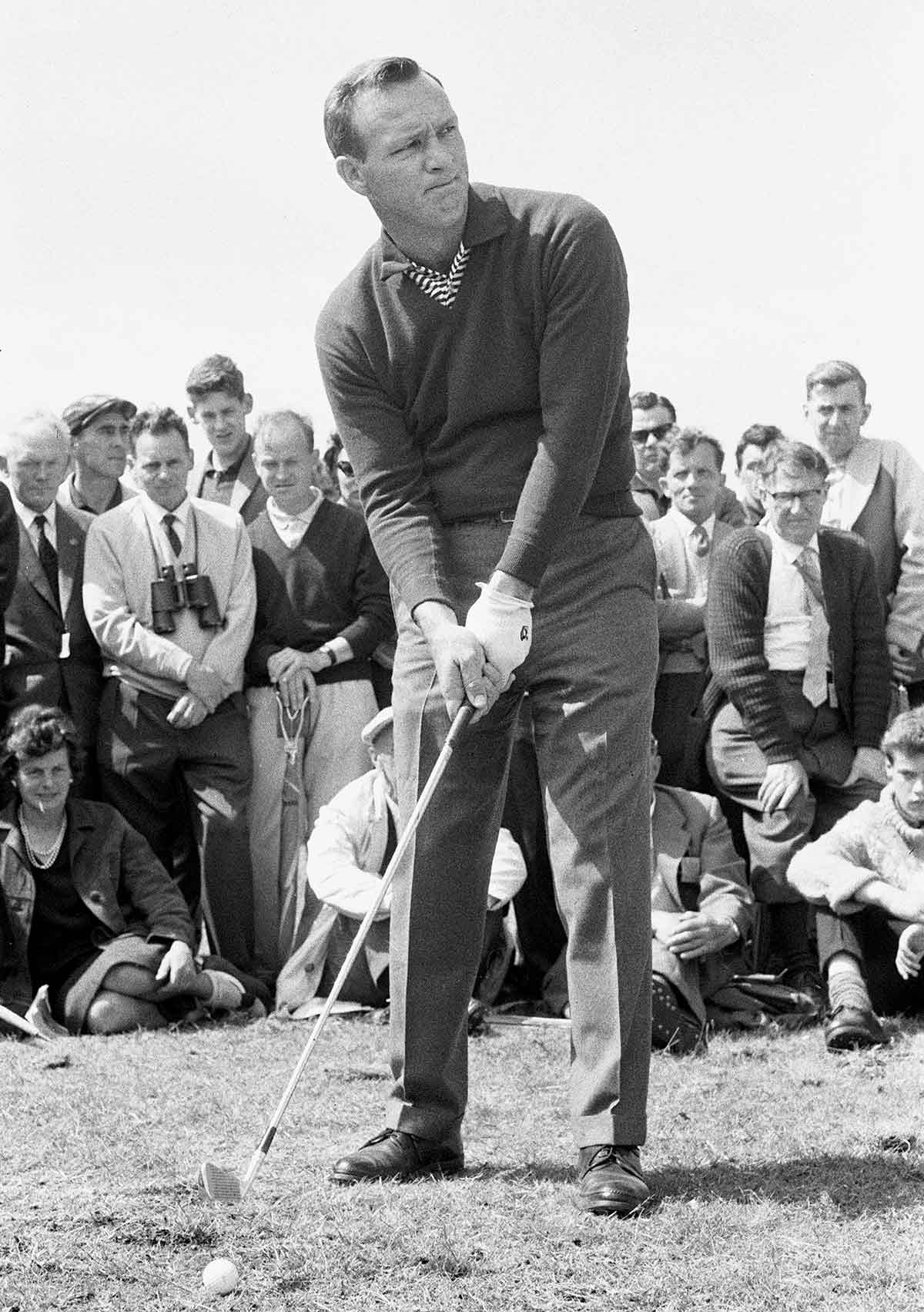
Hagen’s win at St. George’s put to rest the idea that the best U.S. players couldn’t win on Britain’s most demanding links and opened the floodgates for the Open to become golf’s most international of events. He was runner-up the following year at Troon by a single stroke to England’s Arthur Havers, the last non-U.S. winner until 1934. Hagen was Arnold Palmer before television. He wore colorful clothing compared to the boring tweeds of golf’s early champions, and he always appeared at ease, no matter the pressure. Wrote Hilton of Hagen: “When watching him play, I had not the slightest idea that I was being impressed. It was only after I had left him, and had time to think the day’s proceedings over, that I realized how well the American was performing.”
There were three more Claret Jugs in the Haig’s future (Hoylake, 1924; St. George’s again, ’28; and Muirfield, ’29), and Jones got in on the act in 1926 (Lytham & St. Anne’s), 1927 (St. Andrews) and 1930 (Hoylake). Hagen and Jones set the pace for U.S. winners at the Open (and the Scots came to revere Jones after his spasm of immaturity in 1921). If Jones’ wins in the U.S. and British Amateurs are included in his majors tally, he (13) and Hagen (11) are third and fourth all time, ahead of everyone not named Nicklaus or Woods.
To what degree U.S. players owned the 1920s and early ’30s at the Open following the war, truth told, is debatable. Jim Barnes (1925, Prestwick) was English but had lived in the U.S. for many years. Tommy Armour, who won in 1931 at Carnoustie, was born in Edinburgh and served in the Black Watch during the Great War but lived most of his life in America. Gene Sarazen was born in New York and “invented” the sand wedge the same year he won the Open (1932, at Prince’s), and Denny Shute (1933, St. Andrews) was Ohio-born.
Incorporating Hutchison, Barnes and Armour into the U.S. mix, there were 12 American winners in 13 years. Exclude those three, and the international growth of the Open remains apparent.
As tends to happen, in the blink of an eye it was all over. Jones retired in 1930 after winning the Grand Slam. Hagen’s win in 1929 at the Open was his last major. Fewer Americans showed up in Britain because travel was arduous, and the prize money remained insignificant. Johnny Bulla, a wonderful and largely forgotten U.S. player, finished second to Dick Burton in the 1939 Open. Two months after Burton won, Hitler’s armies began their subjugation of the European continent. The Open was paused again for yet another “Great War” — this time for six years. When the championship resumed in 1946, it began to fully blossom as the world’s most alluring event. As the Americans did following World War I, a burgeoning crop of international players put their stamp on the Open. The years 1949 to 1965 were dominated by players outside the UK and U.S.A. Between Bobby Locke (South Africa), Peter Thomson (Australia), Kel Nagle (Australia), Gary Player (South Africa) and Bob Charles (New Zealand), international players won 12 times in 17 years. Eventually, other Open winners emerged from around the globe: Argentina, Spain, Ireland, Sweden and Italy.
In the middle of all that, of course, was Arnold Palmer, who traveled to St. Andrews for the Centenary Open in 1960. Even the R&A felt the luster of the Open had dulled — and welcomed “Arnie” with, ahem, “Open” arms. Palmer finished second to Nagle but returned to win in 1961 at Royal Birkdale and 1962 at Royal Troon. He’d relit the beacon. Not long after, from 1970 to 1983, Tom Watson, Jack Nicklaus, Lee Trevino, Johnny Miller, Tom Weiskopf and Bill Rogers ran up the best-ever U.S. run at the Open: 12 wins in 14 years.
The Open, it seems, never stops evolving as the world championship. But it was Hagen and Jones who pushed the shift of the Open from a parochial gathering to an international happening. Well played, sirs.
